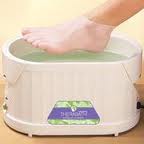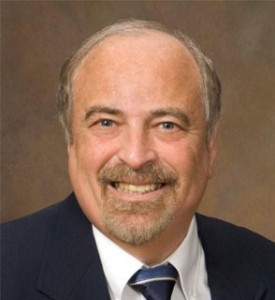Testimonials
REVIEWS OF DR. SCHULER
Home Heating Devices for your painful sore hurting feet & heels.
Authored by Dr. Burton S. Schuler,
Click here to read the Google reviews about Dr. Schuler
In my previous article entitled Sore Feet Best Treated by Heat not Ice says Podiatrist I explained how heat works and why it is better than ice, for foot care for healing of sore, painful, hurting feet and heels .
Here you some easy things you can do at home to heat your feet so that that you can decrease your soreness and pain. Most of this material was taken from Chapter 9 my book Why You Really Hurt: It All Starts In The Foot.
HEATING PADS, PARAFFIN BATHS AND SOAKS
I have found that most people who have swelling of the feet and ankles, can at home use heating pads, paraffin baths, or soaks. Regardless of which ones you use the aim is to decrease your pain by increasing blood flow to the damaged areas of your feet. This is the key to your healing. The trick is to use them on a daily bases, several times a day if you can.
Heating Pads
Common sense demands that you do not to make the heating pad too hot. It you have any difficulties in feeling the proper temperature due to any type of problem(s), you may have to use your elbow to feel the warmth of the pad or get someone to check it for you. Moreover, if you have, any doubts get the permission of your own physician before you start. Diabetics are injured daily from heating pads. See the federal precautions below
Paraffin Baths see photo above
One of my favorite home heat treatments is paraffin bath. It is one of the most effective methods of applying deep heat to relieve pain and stiffness. A paraffin bath is a plastic tub that you melt wax in. You dip your foot, into the tub of wax, applying several coats of wax up to the level of the ankle. Then you wrap your feet up in towels. The hot wax then sends great amounts of blood down to your feet. It is also great for painful hands. A good one costs about $150.00, but I saw one last year at Wal-Mart for about $50.00. With regular use, it can help remove the chronic pain, swelling, soreness, aching, and throbbing from your feet and ankles. As above, before using a paraffin bath make sure there is no medical reason why you can’t.
Soaks
Since the time that man has been hanging out in caves, , we have been sticking our bodies in warm water to feel better. Be it a pan of water, a warm tub, or trip to your spa; soaking parts of our body has always been a neat thing to do. From the standpoint of our feet, soaking will flush your feet by bring blood to it. As I said previous, this flushing will heal our feet, by washing away damaged tissues that have collected over a period. By getting this inflammation out of the injured areas in your feet, you will start to feel better.
DO NOT make the water very hot – warm is just fine. Do not waste any money by putting anything in the water; unless you want to. What is important that you soak it several times a day for about twenty minutes, if you can, ASSUMING THERE IS NO CONTRINDICATIONS TO DO SO.
I am so concerned with this that please find reprinted below the Food and Drugs Administration booklet on the proper use of heating devices.
PLEASE READ BEFORE USING ANY HEATING DEVICE INCLUDING THE HEATING PAD OR PARRFINBATH.
HEATING DEVICES
HOW TO AVOID BURNS
A PATIENT WITH ARTHRITIS SUFFERED A SECOND DEGREE BURN to the hip after receiving treatment with a heating pad for pain. Set at low, the heating pad was left on for less than 20 minutes with the patient lying on top of the pad. Later testing showed that the pad was working properly and met the manufacturer’s specifications. What went wrong? Therapeutic heating devices, such as heating pads, hot packs, and hot water bottles, although generally safe, can cause burns. Most burns result from improper use or use with inappropriate patients, such as infants and elderly patients. The severity of the burn is influenced by factors such as heat intensity, length of application, and the patient’s age, medical history, and ability to sense pain. What precautions can you take?
Follow these do’s and don’ts to keep your patient safe when using heating devices:
DO inspect the device before each use to ensure it’s in proper condition.
DO read directions and contraindications for use.
DO use a protective cover.
DO place the pad or pack on top of not underneath the patient.
DO assess skin integrity frequently and adjust the therapy interval according to the patient’s skin tolerance – no longer than 15 to 20 minutes.
DON’T use the device on someone who’s sleeping or unconscious, an infant, or a patient with altered mental status or decreased skin sensation (such as people with diabetes or compromised skin circulation).
DON’T use pins to fasten the device in place.
DON’T use with ointments or salve preparations containing heat-producing ingredients.
DON’T use electrical heating devices in an oxygen-enriched environment or near oxygen-emitting equipment.
Most of the above is common sense but it was important that you read it.
Over the years I have helped many patients by having them use heat at home. Give it a try, but just be careful.
About the Author: Dr. Burton S. Schuler foot doctor, foot specialist, podiatrist of Panama City, Fl and the director of the Ambulatory Foot Clinics Podiatric Pain Management Center and is a leading authority on the Morton’s Toe, Long Second Toe and it associated problems. He is the author of Why You Really Hurt: It All Starts In The Foot the story of the Morton’s Toe Dr. Schuler, graduated from the N. Y. College of Podiatric Medicine in 1975 at the age of twenty-four, and has been in private practice ever since. In 1982, he published his first book, The Agony of De-Feet: A Podiatrist Guide to Foot Care. During his thirty-seven year professional career, he has written for Collier’s Encyclopedia and various podiatric journals and publications. He has been interviewed by The New York Times, First in Women, and other publications. Dr. Schuler has appeared on hundreds of radio and television programs both here and aboard. He is a Diplomate of the American Academy of Pain Management, the National Board of Podiatric Examiners and the American Board of Wound Management. His professional and civic accomplishments have earned his inclusion in the 1999-2002 Who’s Who in America (Marquis).


